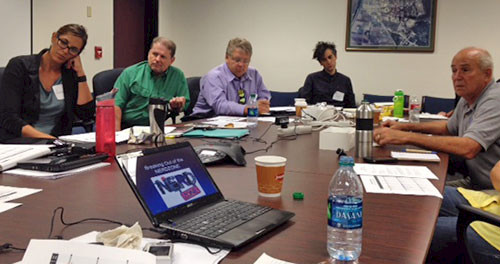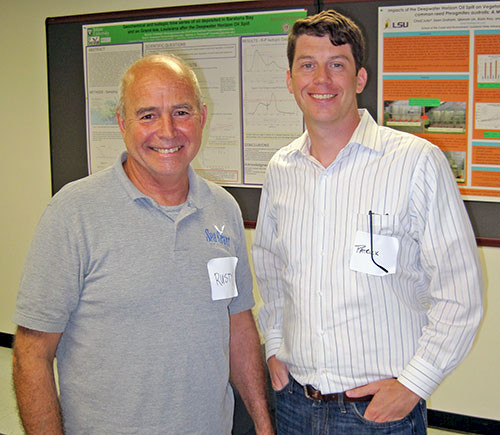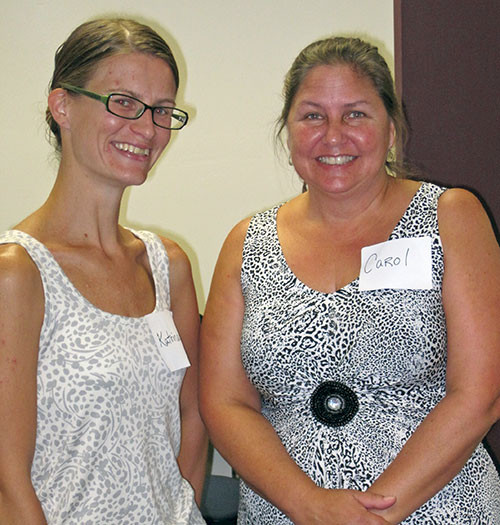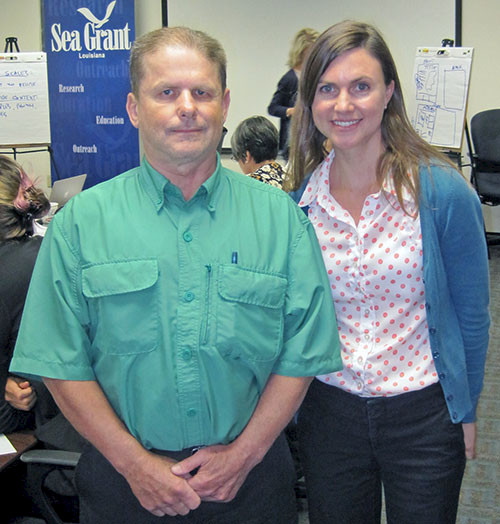Kicking off the Louisiana Discovery Integration and Application program in Baton Rouge
Bill Dennison ·Robert Twilley, Director of Louisiana Sea Grant, has initiated a nine month fellowship program called LA DIA, which is an acronym that stands for Louisiana Discovery Integration and Application. Conveniently, this also translates in French and Spanish to "The Day". Bill Nuttle and I from the Integration and Application Network (note the similar name) traveled to Baton Rouge for a 14 July 2014 meeting--an appropriate day for the kick off event, Bastille Day. Amy Clipp, a writer and consultant from New Orleans, chaired the meeting. I had the good fortune to work with Amy when I was serving on the Science and Engineering Board for the Louisiana 2012 Master Plan.

We met with the four teams of Louisiana State University (LSU) researchers and their Sea Grant Marine Extension Program agent partners at the Louisiana Sea Grant headquarters on the LSU campus. We also visited the Coastal Sustainability Studio on the LSU campus, since much of the visualizing activity will be conducted there. Both of the visits were productive and enjoyable. The most exciting thing about the LA DIA program is the energy and expertise of the young LSU scholars (postdocs and graduate students).
Patrick Michaels (LSU) and Rusty Gaude (Sea Grant) are tackling the issue of sea level rise on Grand Isle, the only inhabited barrier island in Louisiana. They emphasized the islander community (roughly 1,300 people) and the dynamic social and economic forces on Grand Isle. The current economic base is fisheries, but they foresee a more tourism-based economy in the future. Rusty was going to initiate a conversation with key stakeholders on the following day, so this project has already begun.

Katrina Duback (LSU) and Carol Franze (Sea Grant) are developing visualizations for decision support process models for different stakeholders. They emphasized the differences in time horizons for planning by different stakeholders, from very short (days to weeks) to longer (decades) time periods. The importance of connectivity and stakeholder engagement will be key in their models.

Leanna Heffner (LSU) and Jacob Mitchell (LSU) teamed up with Twyla Herrington (Sea Grant) to develop visualizations for sediment diversions. Sediment diversions are the redirection of some of the flow of the Mississippi River into areas where the river-bourne sediments will settle and help create wetlands and land. Sediment diversions are somewhat controversial in Louisiana, so they are trying to identify the tradeoffs, temporal perspectives and include uncertainty estimates in the visualizations.
Emily Powell (LSU) and Alan Matherne (Sea Grant), assisted by Matt Bethel (Sea Grant) are tackling the issue of sea level rise in Point-aux-Chenes, which is a place dominated by Native Americans of the Pointe-au-Chien tribe. They are combining traditional ecological knowledge (TEK) with various data sources to develop visualizations of different sea level rise scenarios so that the local community can develop adaptation options. These adaptation options include "up the bayou" (moving to higher ground) and adapt homes in situ (e.g., elevated houses).

Each of the teams recognized the importance of engaging with the community and being respectful of their time, values and beliefs. Rex Caffey, Director of Marine Extension, emphasized the importance of being a good listener when dealing with community members.
The combination of expertise from the design realm (e.g., landscape architecture, urban planning) and science realm (e.g., ecology, fisheries) in the different teams will be interesting to watch.
The extensive use of the Coastal Sustainability Studio by the different teams incentivized a visit to their studio on the LSU campus. The Coastal Sustainability Studio was a large open space plan populated by 14 interns from around the country with six staff members. Jeff Carney is the Executive Director of the studio, and I learned that he is married to Andrea Galiniski, one of the talented people at the Louisiana Coastal Protection and Restoration Authority who was a key team member in the Louisiana 2012 Master Plan--small world in Baton Rouge.

The Coastal Sustainability Studio emphasizes the interconnections between design, engineering and science. They draw in faculty expertise from various LSU departments and apply that to Louisiana issues. Jeff articulated the different types of audiences for the studio projects as being wide (e.g., general public, schools, elected officials), narrow (e.g., transportation industry, fisheries, oil and gas industry) and deep (e.g., scientists, NGOs, engineers).
They showed us some of the different visualizations that they were working on and a small scale model for a facility that the Louisiana Coastal Protection and Restoration Authority is going to build on the new 'water campus' along the banks of the Mississippi River. The building will have various interactive displays and a large physical model of coastal Louisiana will be used to test different management strategies (e.g., river diversions, dredging) in different sea level rise situations.
Bill Nuttle and I combined for the following acronym: "Viva LA DIA!" = Very Interesting Visualizing Academics: Louisianan's Accelerate Dialogues, Instigate Actions. We are going to be staying in touch with the teams via webinars and an August training session and look forward to seeing how these projects evolve.
About the author
Bill Dennison

Dr. Bill Dennison is a Professor of Marine Science and Vice President for Science Application at the University of Maryland Center for Environmental Science.

